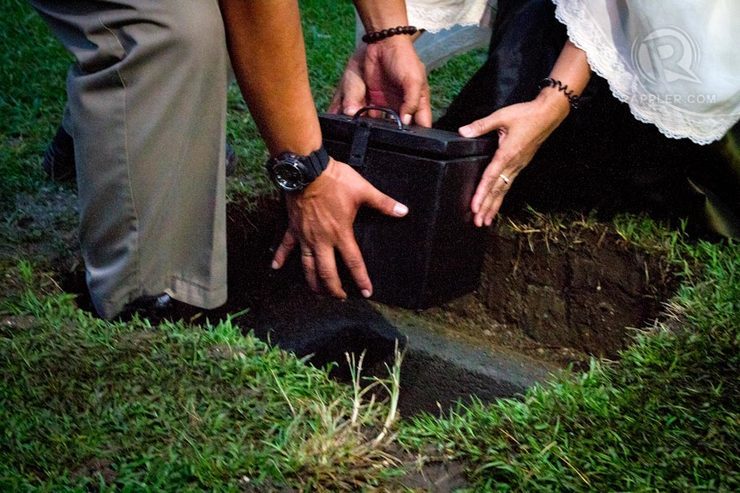SUMMARY
This is AI generated summarization, which may have errors. For context, always refer to the full article.

MANILA, Philippines – The Cultural Center of the Philippines (CCP) burned on Thursday, September 25, the old and worn-out Philippine flags it had used and kept in storage through the years.
The flag burning is a first in the 45-year history of the country’s cultural center, though it had already been practiced by other government agencies in the past. (READ: Burning the flag)
This practice is actually in compliance with Section 14 of Republic Act 8491 or the Flag and Heraldic Code of the Philippines. It states that worn-out flags shall not be thrown away but shall be solemnly burned to avoid misuse or desecration.
The law does not state any protocol for the flag burning procedure. But in an article by the Philippine Information Agency, it is said that “the disposal of worn-out Philippine flags is preferably held in conjunction with the flag lowering ceremony.”
The worn-out flag is lowered from the pole, folded, and placed on a table beside the flagpole. Patriotic songs are played to set the appropriate mood for the ceremony. A guest speaker then talks about the significance of the rites.
A lady official should be present during the ceremony, and stands not far from the burning flags. She represents Inang Bayan (Motherland), and her presence serves as a reminder that a woman made the first Filipino flag.
The flags to be burned are handed first to the lady official, then to the guest of honor who prepares the flag for burning.
After the burning, the ashes are then placed in an urn, which is laid to rest in a burial ground at least 1.5-feet deep.

Flag burning, however, can pose hazards to health. In a statement by the Ecowaste Coalition in 2008, the group claimed that flags might release toxic gases, especially those made of all-weather nylon.
The group said that the health-hazardous flag-burning “will not be in harmony” with Philippine laws that protect public health and the environment.
Just like in the Philippines, disposal of old flags through burning is also required in countries such as the US and Canada.
In other nations, like in Australia and the United Kingdom, burning is just one method of disposing old flags. Cutting the flags can also be done, as long as the pieces no longer resemble the original flags. – Rappler.com
Add a comment
How does this make you feel?
There are no comments yet. Add your comment to start the conversation.